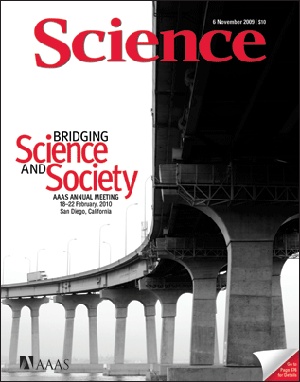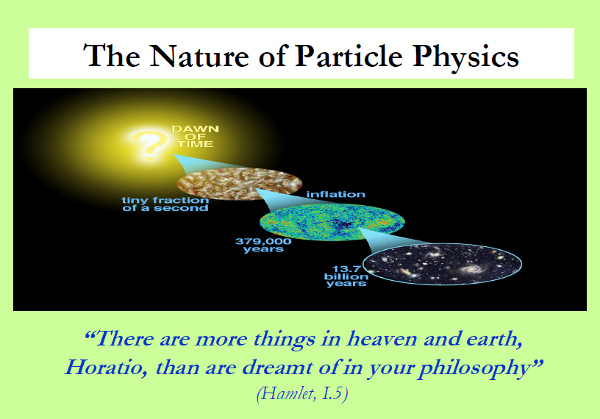Director's Corner
4 March 2010
 Barry Barish |
Particle Physics for biologists and beyond
In last week's guest Director's Corner written by Mike Harrison, Americas Regional Director, he discussed his responsibilities to communicate and inform different parts of the US government on the motivation, status and plans for the ILC. Today's column might be considered a sequel, in that I am addressing another important area of communication for the ILC and particle physics more generally: the need to engage our scientist colleagues in other areas of science ranging from biology to astronomy. There is no natural forum for such communication, except through general-interest articles in Scientific American or equivalent journals. I had a rare opportunity to address such an audience on the "New Frontiers in Particle Physics" as an invited plenary speaker at the annual meeting of the American Association for the Advancement of Science (AAAS) in early February.
The theme of this year's AAAS annual meeting was a "call on every scientist and engineer to make their work both beneficial to society and understandable, and on society to discover again the excitement and hope that research and its findings offer." The message of this theme presents a special challenge for particle physicists, since there are few immediate or obvious applications or benefits of our field to society, and the science itself is difficult to explain to scientists from other fields, let alone the public. Nevertheless, the excitement of particle physics can and should be explained and shared, and we do provide many benefits to society - for example the cultural value of knowledge, the world-wide web, and of course technological benefits from the ILC.
We have benefited from strong public support in particle physics enabling us to build the magnificent facilities that have resulted in immense progress in the recent past and we anticipate will lead to major discoveries over the next decade. Beyond that, we have ambitions to build yet more major facilities; both on a national scale, and globally for an ILC.
The AAAS annual meeting covers an impressively broad range of science and science-related topics. The heart of the meeting was broken into thirteen parallel Symposia Tracks. For particle physics, this year's meeting had one special session on "Are Neutrinos the Reason We Exist?" as part of the Symposium on Physical Sciences Frontiers. The neutrino session was nicely organised and held interest for those reasonably close to the field, as well as others drawn from further afield. An additional special session of interest to particle physicists was called "Doomsday vs Discovery" and featured John Ellis (CERN) on LHC science opportunities and why it is safe, along with Alan Boyle (MSNBC) on media coverage and Robert Crease (Stony Brook University) on debating doomsday scenarios in public from an historical and philosophical perspective.
| Watch the talk "New Frontiers in Particle Physics" or download the AAAS movie (Flash-format) |
In addition to the Symposia and special sessions, the conference is unified through plenary lectures once per day, and I was fortunate to be chosen to be one of the four speakers this year. I decided to give a talk that demonstrated the wide range of fundamental questions we address and the progress expected in the coming few years (dark matter, neutrino mass and oscillations, and beyond-the-standard-model frontiers at the LHC), as well as introduce the longer-range vision to address even larger questions and experimentally the idea of furthering the energy frontier with the ILC. My talk was given to a large audience from all fields of science, and the talk was immediately followed by almost two hours of a dedicated session with the science press.
As the theme of the AAAS meeting emphasizes, it is the responsibility of us scientists to communicate the importance and excitement of our work, to share the projects that we undertake and to concern ourselves with the societal benefits from what we learn. That message is especially true for particle physics, where we must make a special effort to engage other scientists, the public and the governments who support us.
Read also AAAS.org and Science story on Barry Barish's address.
-- Barry Barish

